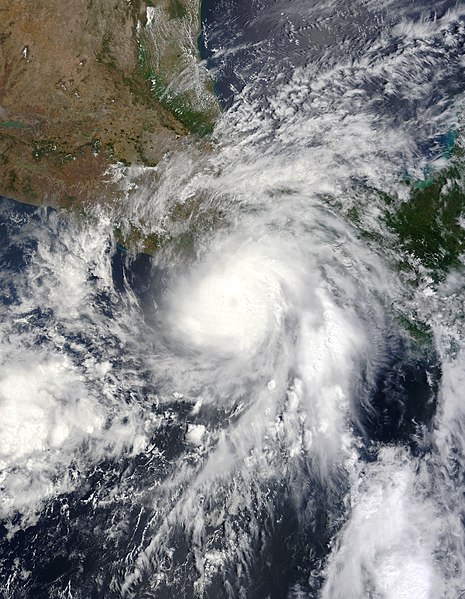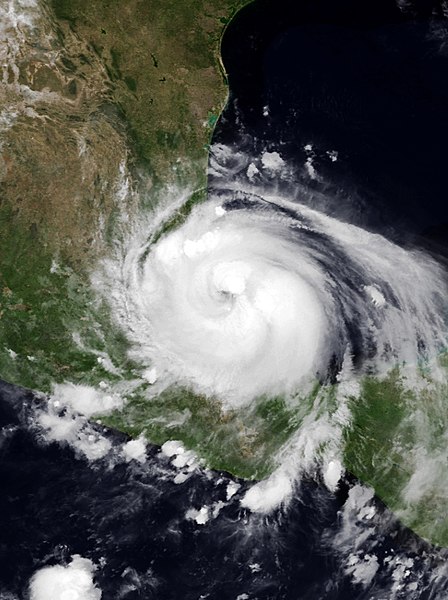A hypercane is a hypothetical class of extreme tropical cyclone that could form if sea surface temperatures reached approximately 50 °C (122 °F), which is 12 °C (22 °F) warmer than the warmest ocean temperature ever recorded. Such an increase could be caused by a large asteroid or comet impact, a large supervolcanic eruption, a large submarine flood basalt, or "incredible" global warming. There is some speculation that a series of hypercanes resulting from the impact of a large asteroid or comet contributed to the demise of the non-avian dinosaurs. The hypothesis was created by Kerry Emanuel of MIT, who also coined the term.
The relative sizes of Typhoon Tip, Cyclone Tracy, and the Contiguous United States. While the average hypercane would not exceed Cyclone Tracy in size, the largest hypercanes could exceed even Typhoon Tip in size.
The Saffir–Simpson hurricane wind scale (SSHWS) classifies hurricanes—which in the Western Hemisphere are tropical cyclones that exceed the intensities of tropical depressions and tropical storms—into five categories distinguished by the intensities of their sustained winds. This measuring system was formerly known as the Saffir–Simpson hurricane scale, or SSHS.
Image: Nicole 2022 11 10 0620Z colored
Image: Agatha 2022 05 30 1700Z
Image: Grace 2021 08 21 0610Z
Image: Lidia 2023 10 10 2120Z





